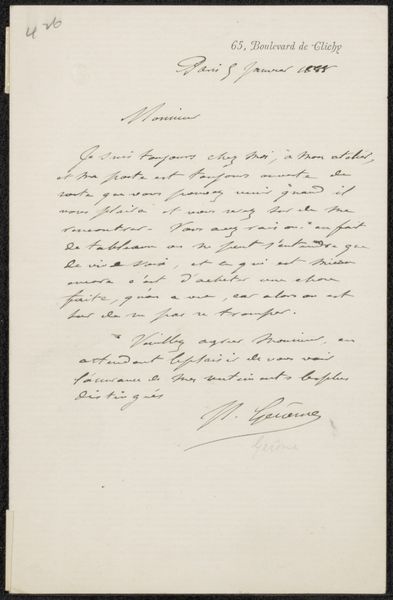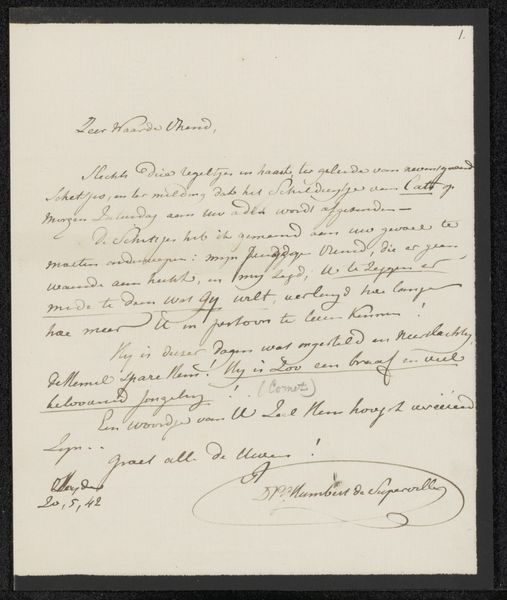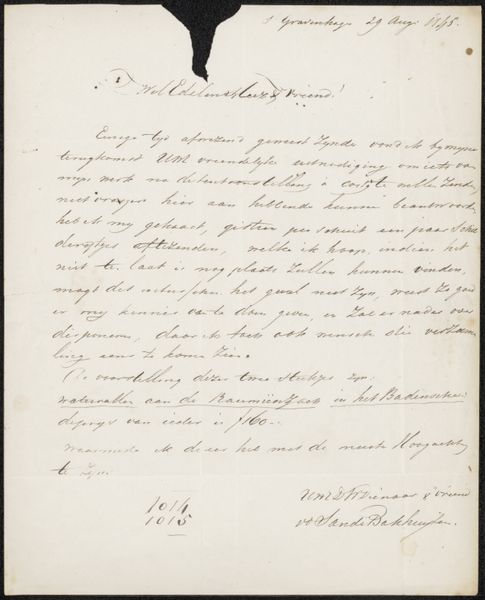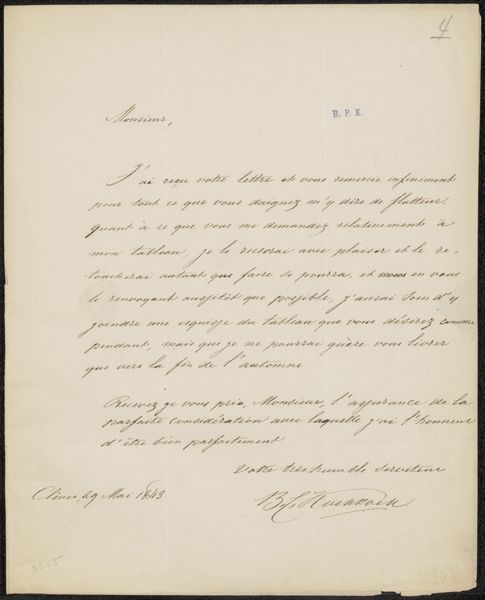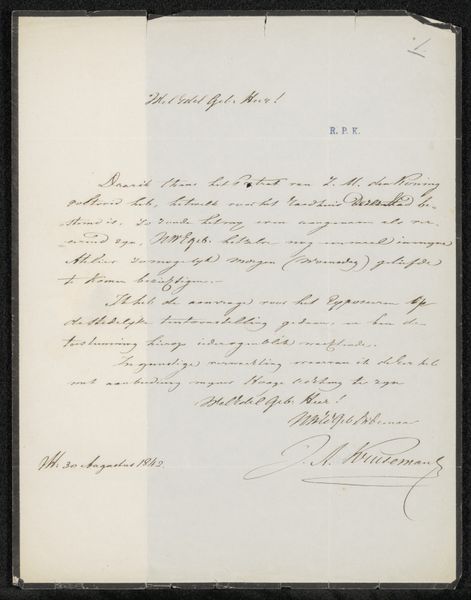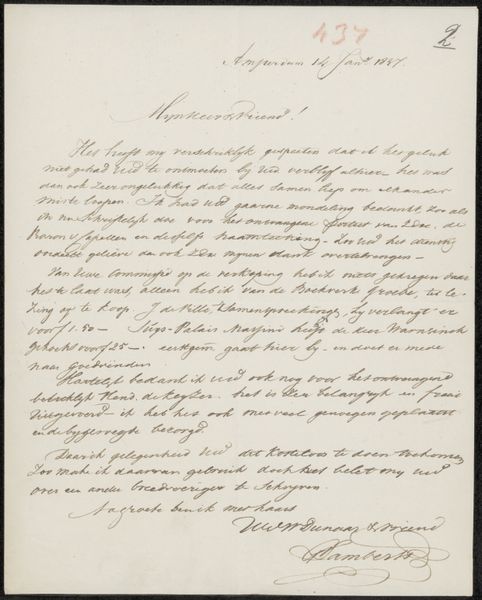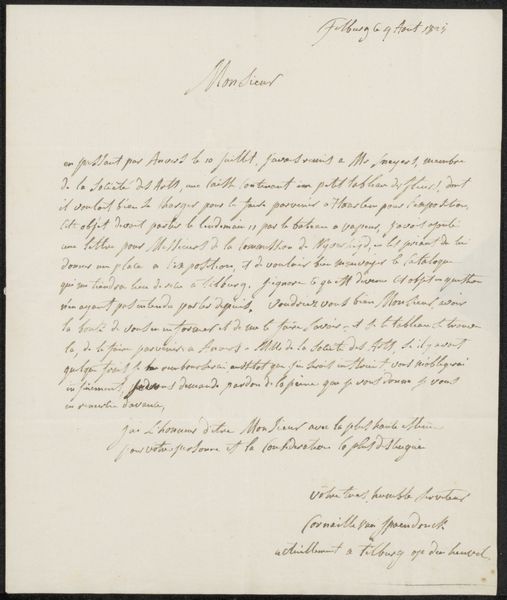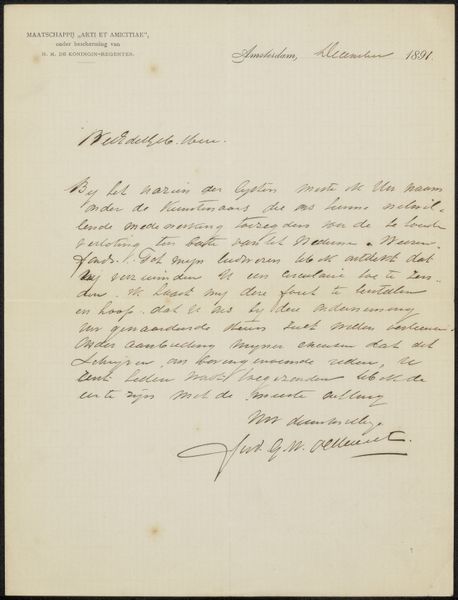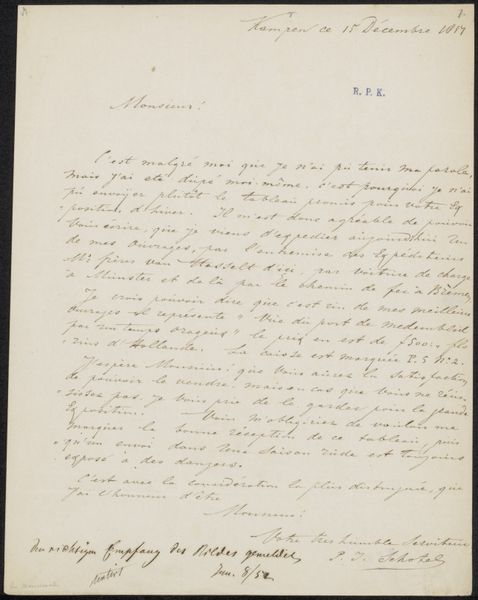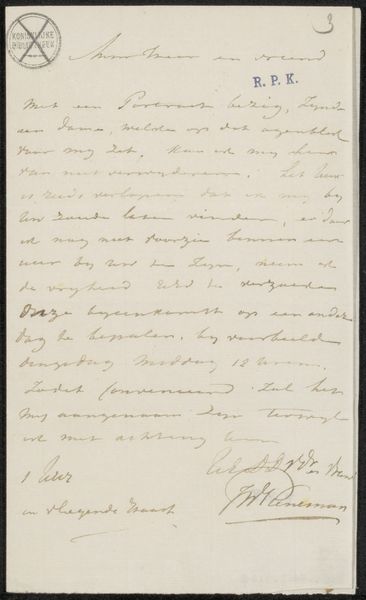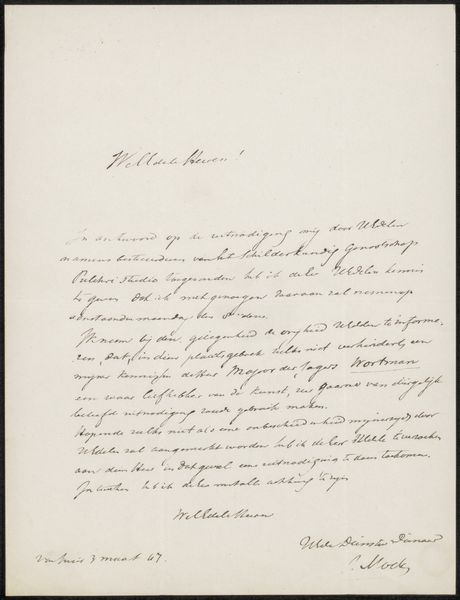
Copyright: Rijks Museum: Open Domain
Editor: This is "Brief aan anoniem" by Frederik Hendrik Weissenbruch, possibly from 1869. It’s mixed media – ink and drawing on paper. It looks like a handwritten letter, quite personal in its nature. What stands out to you about this work? Curator: For me, this piece speaks volumes about the socio-cultural context of artistic communication in the 19th century. Think about the role of correspondence before widespread telephones or email. Letters weren't just practical; they were a primary way for artists to engage in dialogue, share ideas, and build relationships. How might this letter shed light on Weissenbruch's network and his reception? Editor: So you’re saying that this isn't just a letter; it's also a record of Weissenbruch’s interaction within the art world. But, because it’s “aan anoniem,” it’s addressed to someone anonymous, does that influence the meaning or value we assign it? Curator: Absolutely! The anonymity adds intrigue, doesn’t it? Was this a critic, a patron, a fellow artist? Consider the power dynamics inherent in that relationship. The act of sending a physical letter suggests a level of formality, and perhaps, a desire for documentation, for posterity even. Could this document illuminate our understanding of his artistic practices, but also its reliance of specific cultural contexts for communication and relationship-building? Editor: That makes me see it in a completely new light. I was focusing on it as simply an intimate note, but its historical context provides another view. Curator: Exactly! By looking at the broader societal and artistic context, this "anonymous letter" gives us very interesting views. I found it interesting, as it emphasizes how important societal structures are to shape not only the artist, but also the value and meaning we ascribe to the art piece. Editor: Me too. I appreciate how you linked art, society and politics in such interesting ways.
Comments
No comments
Be the first to comment and join the conversation on the ultimate creative platform.

